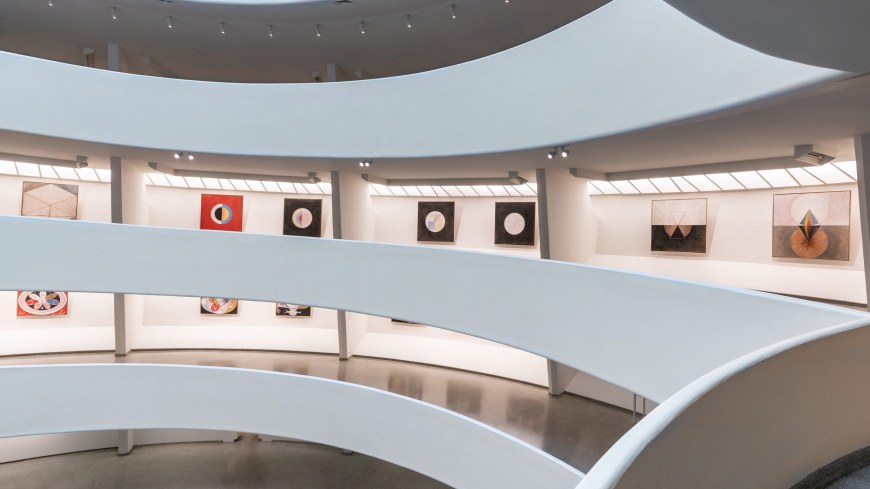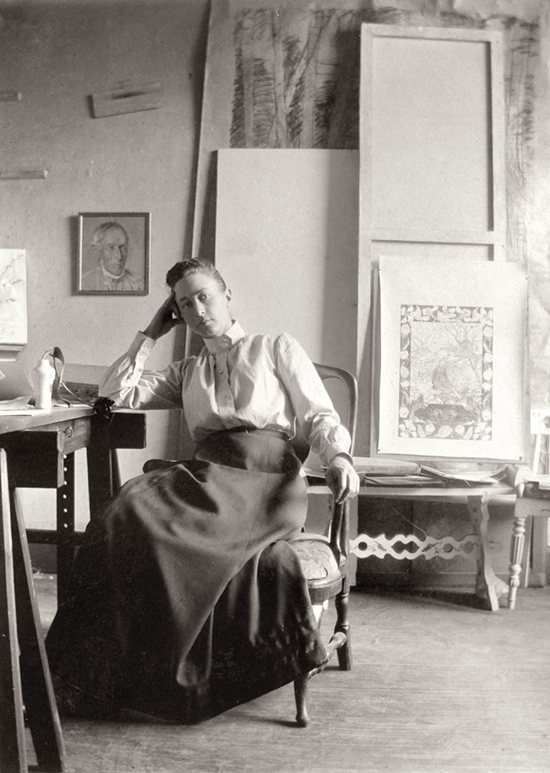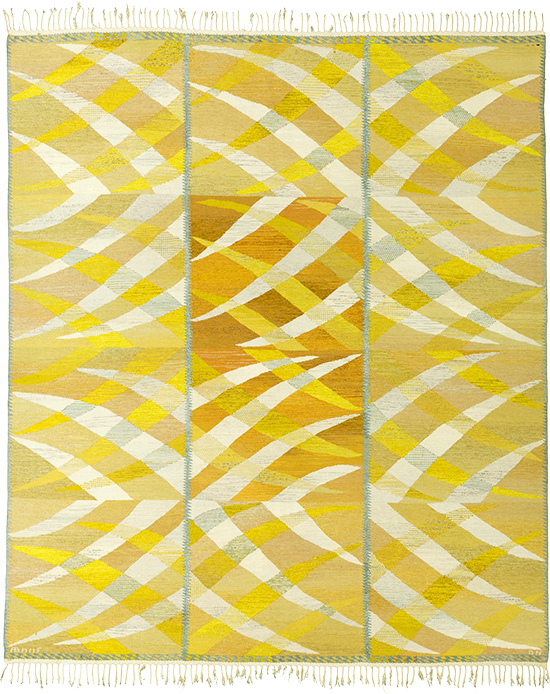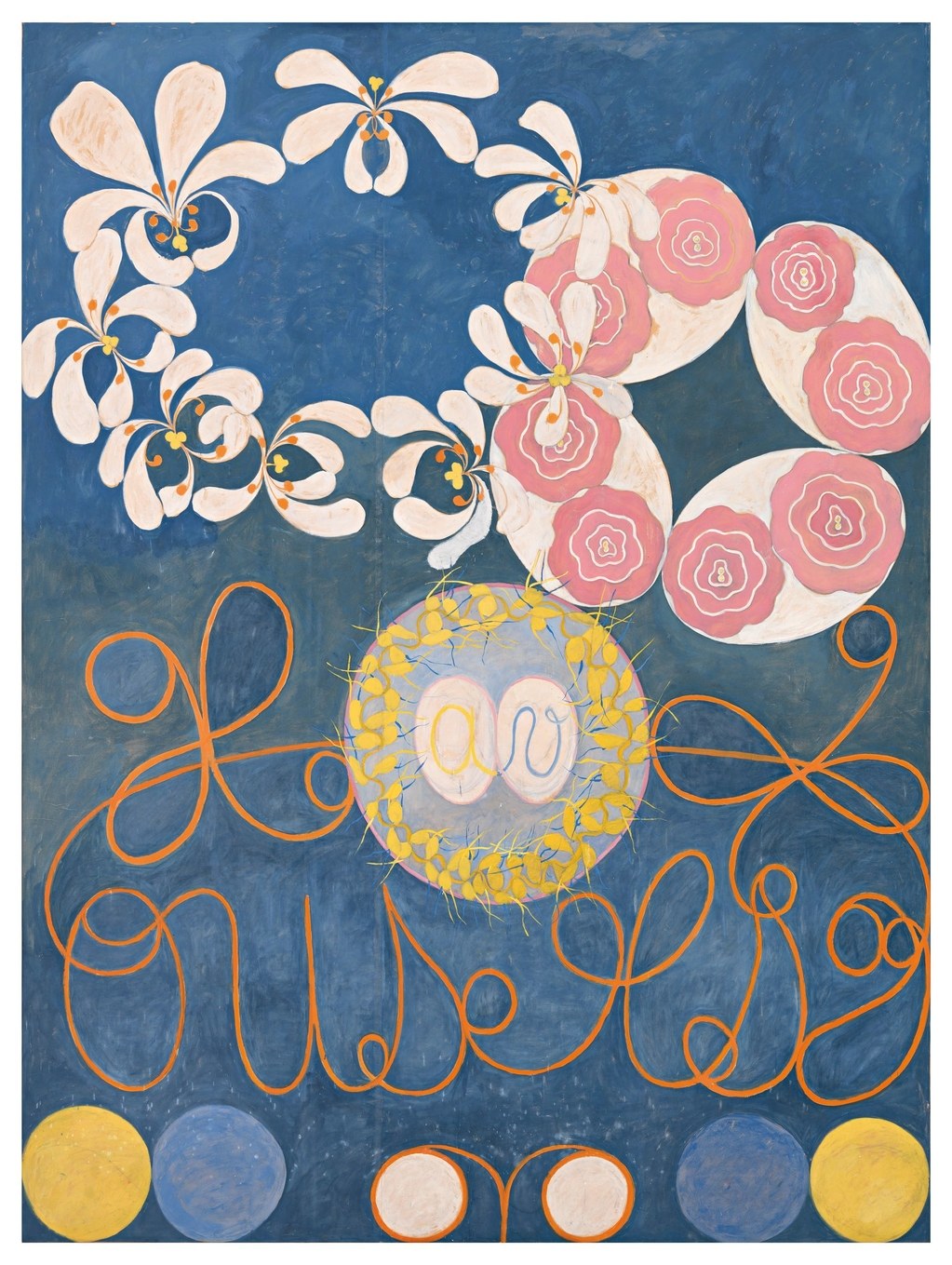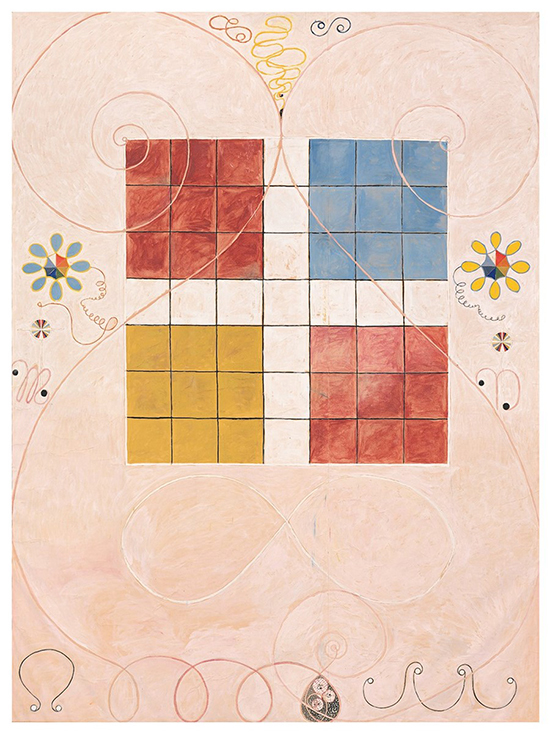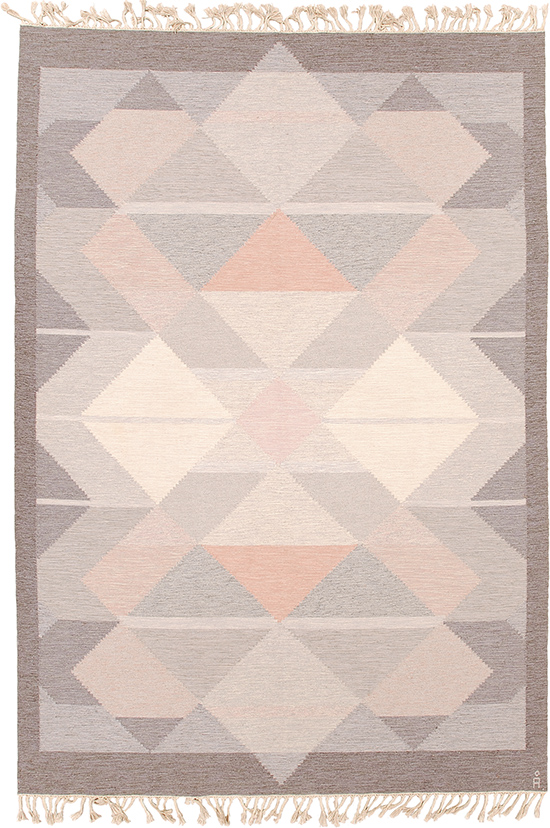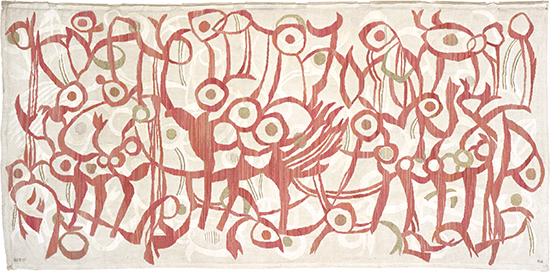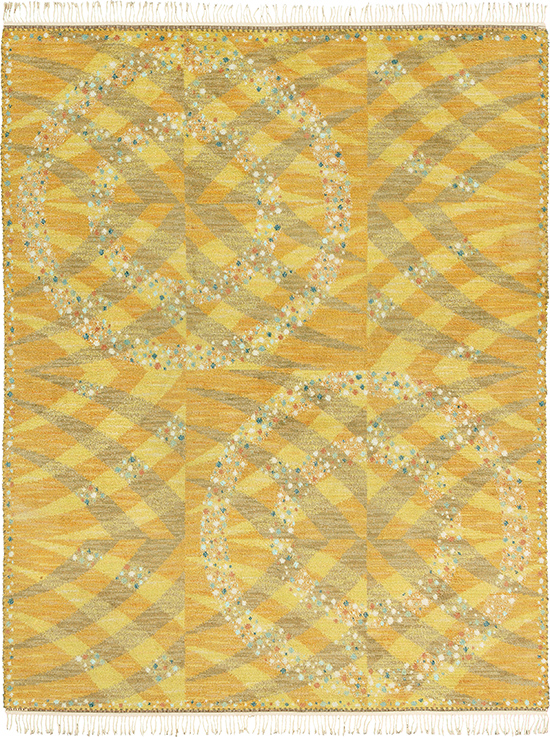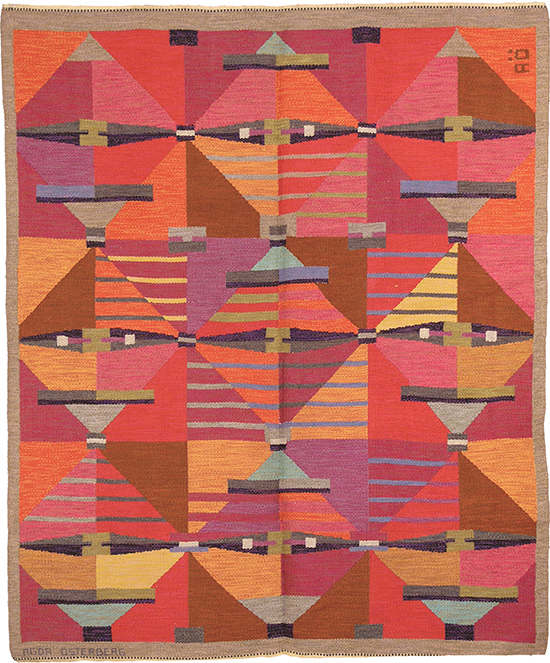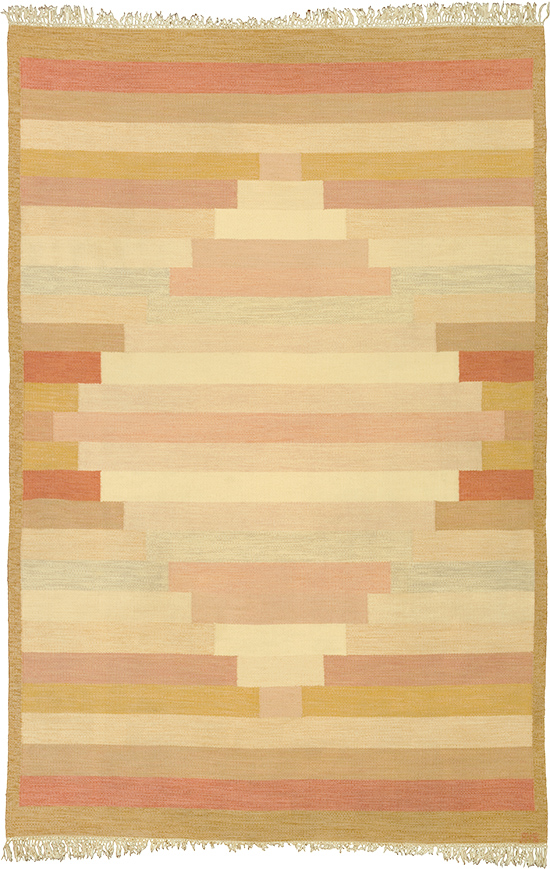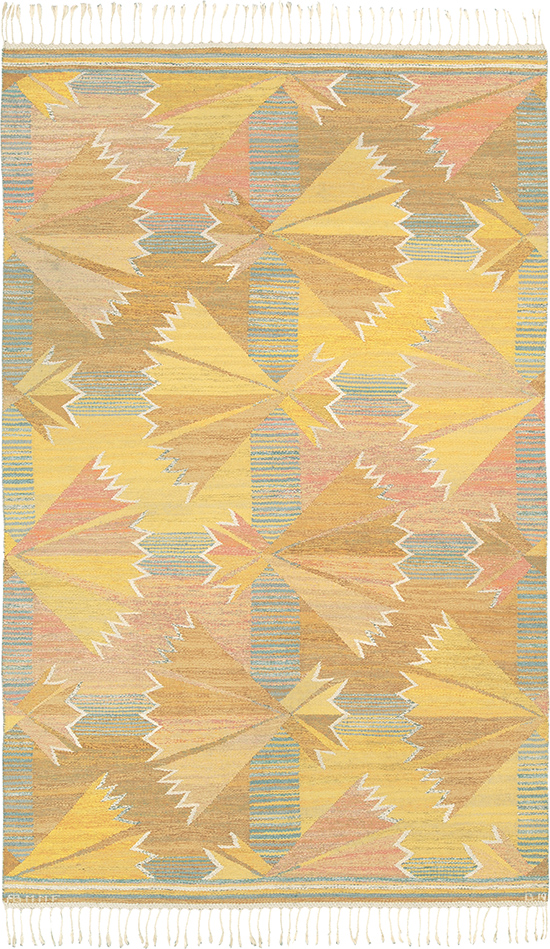February 18, 2019
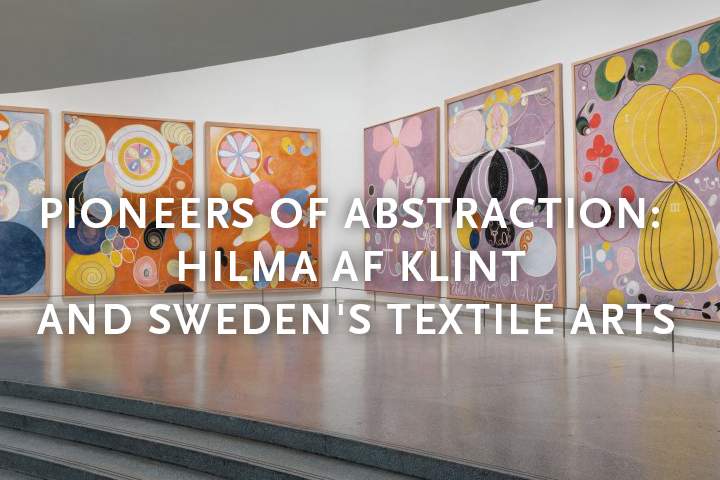
A series of paintings by Hilma af Klint, collectively titled “The Ten Largest,” exhibition view, “Hilma af Klint: Paintings for the Future,” the Solomon R. Guggenheim Museum, New York.
The Hilma af Klint show at the Guggenheim was without question the New York art exhibition of the past year. This turn-of-the-century Swedish painter created a truly radical body of work in an abstract mode that preceded the works of the painters considered the fathers of abstraction Mondrian, Kandinsky, and Malevich.
Image Source: The Solomon R. Guggenheim Museum
We at FJ Hakimian were delighted with this show. It was an opportunity to see yet another example of twentieth century Swedish women artists’ extraordinary creativity. With our collection’s focus on Swedish weaving, we are familiar with Swedish abstraction and it was fascinating to see some of the same pure, raw visual language and extraordinary color reinvented in the context of painting. And in the unparalleled space of the Guggenheim Museum as well, realized on such a large scale, so powerfully present.
Image Source: The Solomon R. Guggenheim Museum
Like Hilma af Klint, many Swedish textile artists from later in twentieth century, such as Märta Måås-Fjetterström, Barbro Nilsson and Marianne Richter, explored the radical possibilities of abstraction. They too were interested in invisible relationships and dimensions, and gave shape to the spiritual realms and evolution in a visual medium.
Swedish Flat Weave Rug "PAULA, GUL" #22165 by Barbro Nilsson and AB Märta Måås-Fjetterström. Sweden ca. 1964. 10'7" x 9'1" (323 x 277 cm).
We were particularly enamored of af Klint’s Big Ten paintings from 1907. These works are perhaps her most beautiful and the ones most closely related to the later weavings of Swedish artists.
The subject of these 1907 works is a traditional one— The Ages of Man and Woman, but here expressed abstractly, primarily through glorious color. Yet many of the forms relate to nature: spirals, natural curved lines. This style has been linked to Art Nouveau, but for us it is closer to Swedish folk painting from the nineteenth century. The large spiral forms, particularly in the first in the series, Childhood with its jubilant floral forms, and the final paintings of Old Age, are especially reminiscent of folk artworks.
“Group IV, The Ten Largest, No. 1, Childhood,” from 1907. Photograph by Albin Dahlström; courtesy the Moderna Museet, Stockholm.
“Group IV, The Ten Largest, No. 10 Old Age,” 1907. Courtesy of Stiftelsen Hilma af Klints Verk.
Whatever their inspiration, it is wonderful to have these works in New York, and for us to have the chance to see such important paintings that challenge the oft-told history of abstract art in the twentieth century. These paintings help open up our ideas of what works are important, and we can clearly see that woman artists in Sweden were at the forefront of some of the most avant-garde work of the century. The exhibition runs until April 23.
Swedish Flat Weave Rug #22010 by Anna Johanna Ångström. Sweden ca. 1970. 11'4" x 7'10" (345 x 239 cm).
Swedish Wall Hanging "RODA TROLLERIET" #02713 by Marin Hemmingsson and AB Märta Måås-Fjetterström. Sweden ca. 1964. 6'6" x 13'0" (198 x 396 cm).
Swedish Rya Rug "MAGDALENA, GUL" #03422 by Barbro Nilsson and AB Märta Måås-Fjetterström. Sweden ca. 1967. 12'4" x 9'11" (376 x 302 cm).
Swedish Flat Weave Rug #02964 by Agda Österberg. Sweden ca. 1960. 8'6" x 7'1" (259 x 216 cm).
Swedish Flat Weave Rug #22216 by Anne Marie Boberg. Sweden ca. 1950. 12'0" x 7'11" (366 x 241 cm).
Swedish Flat Weave Rug "STRUTAR, GUL" #22100 by Barbro Nilsson and AB Märta Måås-Fjetterström. Sweden ca. 1943. 8'4" x 5'3" (254 x 160 cm).

